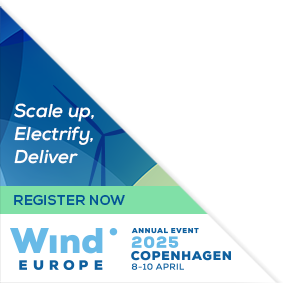Presentations
Siblings:
ProceedingsProgrammeSpeakersPostersContent PartnersPowering the FutureMarkets TheatreResearch & Innovation in actionStudent programmePresenters dashboard
How will a 200GW roll-out in the North Sea change the wind climate? Revelations from a country-scale LES run.
Remco Verzijlbergh, CEO, Whiffle
Session
Abstract
The roll-out of offshore wind energy in the European seas will accelerate in the coming years and reach massive numbers up to 250GW by 2050. One pertinent question surrounds this scenario: will such an amount of wind turbines cause a significant change in wind climate? Large-eddy simulation (LES) provides an ideal computational framework to provide insights into this question, but even with modern GPU powered LES models the computational burden is phenomenal. In this talk we present the set-up a multi-GPU LES run and discuss our main findings. The key to enable runs of this size lies in adapting our GPU-based LES code to benefit from the latest trends in high-performance computing. NVIDIA's flagship A100 GPUs (nowadays famously used for training Large Language Models), when combined with fast interconnections, can host simulation domains of several hundred kilometres in the horizontal directions, spanning a large part of the North Sea basin. We simulate the year 2020 with two wind energy scenario's: 1) with the actual installed capacity of that year and 2) with the expected installed capacity for the year 2050, amounting to roughly 190 GW in the entire North Sea and 53 GW in the Dutch part of it. We present results with a focus on the following key elements: 1) quantifying and understanding wake effects of very large wind farm clusters 2) understanding vertical mixing, the effects on (/depletion of) the atmospheric boundary layer and limits on the entrainment of kinetic energy 3) understanding the effect on the wind climate and 4) understanding the effects on other weather variables like clouds, rain and temperature. We briefly comment on differences with simulations of the HARMONIE-AROME mesoscale model with the Fitch wind farm parameterization of the same wind energy scenarios.










